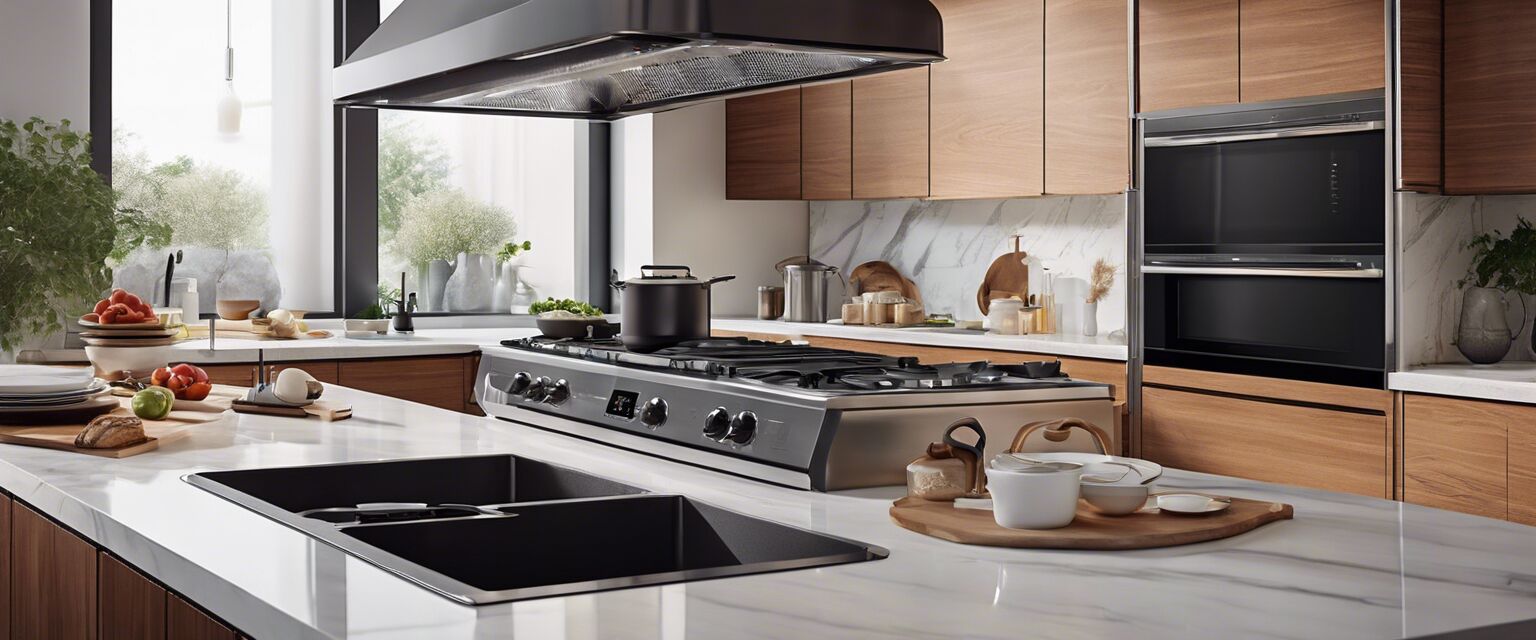
The pros and cons of smart kitchen appliances
Key Takeaways
- Smart kitchen appliances enhance convenience and efficiency.
- Integration with smart home technology can lead to better energy management.
- There may be a significant upfront cost associated with smart appliances.
- Privacy concerns exist due to connectivity features.
- Understanding the technology is crucial for maximizing benefits.
With the rise of technology in our everyday lives, smart kitchen appliances have become popular among homeowners looking to modernize their cooking experience. These high-tech tools offer various functionalities designed to enhance convenience, improve efficiency, and even help with smart home integration. However, like any technological advancement, there are both pros and cons to consider before making the leap to a smart kitchen. In this article, we will explore the advantages and potential drawbacks of integrating smart appliances into your kitchen.
What are smart kitchen appliances?
Smart kitchen appliances are devices that connect to the internet or other smart home systems, allowing for remote monitoring and control. They often come equipped with advanced functionalities, such as voice command features, sensors, and automation capabilities. Examples include smart ovens, intelligent cooktops, smart refrigerators, and touchless faucets.
Benefits of smart kitchen appliances
When evaluating the merits of smart kitchen appliances, here are some of the key advantages:
- Convenience: Smart appliances can simplify cooking tasks, allowing you to set timers, preheat ovens, or check on cooking progress from your smartphone.
- Energy efficiency: Many smart devices offer energy-saving features, such as energy usage tracking and optimization functions that can help reduce your utility bills.
- Enhanced safety: Smart appliances often include safety features such as automatic shut-off functions to prevent accidents, making your kitchen a safer place.
- Remote control: You can control your appliances from anywhere, allowing you to start cooking while you're still at work or adjust settings as needed.
- Integration: Smart appliances can integrate with other smart home devices, creating a seamless and user-friendly ecosystem.
Drawbacks of smart kitchen appliances
Even with their many benefits, smart kitchen appliances also come with some potential downsides:
- Cost: The initial investment in smart appliances can be substantial compared to traditional kitchen devices.
- Learning curve: Some users may find it challenging to navigate the technology or struggle to utilize all the features effectively.
- Reliability: Dependence on a stable internet connection can lead to issues if the connection is lost, causing appliances to become inoperable.
- Privacy concerns: As with any internet-connected device, there can be concerns regarding personal data and security vulnerabilities.
- Repair and maintenance: Smart appliances may require specialized repairs, which can be more complex and costly than traditional appliances.
Comparison with traditional appliances
| Feature | Smart Appliances | Traditional Appliances |
|---|---|---|
| Connectivity | Wi-Fi and Bluetooth enabled | No connectivity |
| Energy efficiency | Optimized energy usage | Standard energy usage |
| Remote control | Control via apps | Manual control only |
| Initial cost | Higher upfront cost | Lower upfront cost |
| User experience | Advanced features | Basic features only |
Making the decision
When considering whether to invest in smart kitchen appliances, it's essential to weigh the benefits against the drawbacks. Questions to ask include:
- What is my budget for kitchen appliances?
- Do I prioritize convenience and advanced features over cost?
- Am I comfortable using technology and navigating potential challenges?
- How important is energy efficiency and sustainability to me?
By asking these questions, you can determine if smart kitchen appliances are the right fit for your home. Additionally, exploring specific Bluetooth-enabled appliances, intelligent cooktops, or smart ovens may help clarify your choices.
Key features to consider
If you decide to move forward with smart appliances, here's a list of important features you should consider when making your selections:
- Compatibility: Ensure the appliances work with your existing smart home ecosystem.
- User interface: Look for devices with intuitive controls and user-friendly apps.
- Energy monitoring: Some appliances allow you to track energy consumption over time.
- Voice assistant integration: Check if the appliances work with your preferred voice assistant.
- Versatility: Choose appliances with multiple functions to maximize value.
Pros
- Convenient remote access to cooking processes.
- Energy-saving features could lower bills.
- Enhanced safety and monitoring capabilities.
- Seamless integration with smart home technology.
- Cutting-edge technology can enhance cooking skills.
Cons
- Higher initial costs compared to traditional appliances.
- Potential for technology failures or over-reliance on connectivity.
- Concerns about privacy and data security.
- Learning curves may discourage some users.
- Maintenance and repairs could be more complex.
Conclusion
Integrating smart kitchen appliances into your home can undoubtedly transform your cooking experience, offering convenience and efficiency. However, it’s crucial to weigh the pros and cons carefully. Consider your lifestyle, technology comfort, and budget before making a decision. If you’re still uncertain, explore more detailed material on our Smart Kitchen Buying Guides for additional insights into high-tech kitchen appliances and how they can elevate your kitchen space.